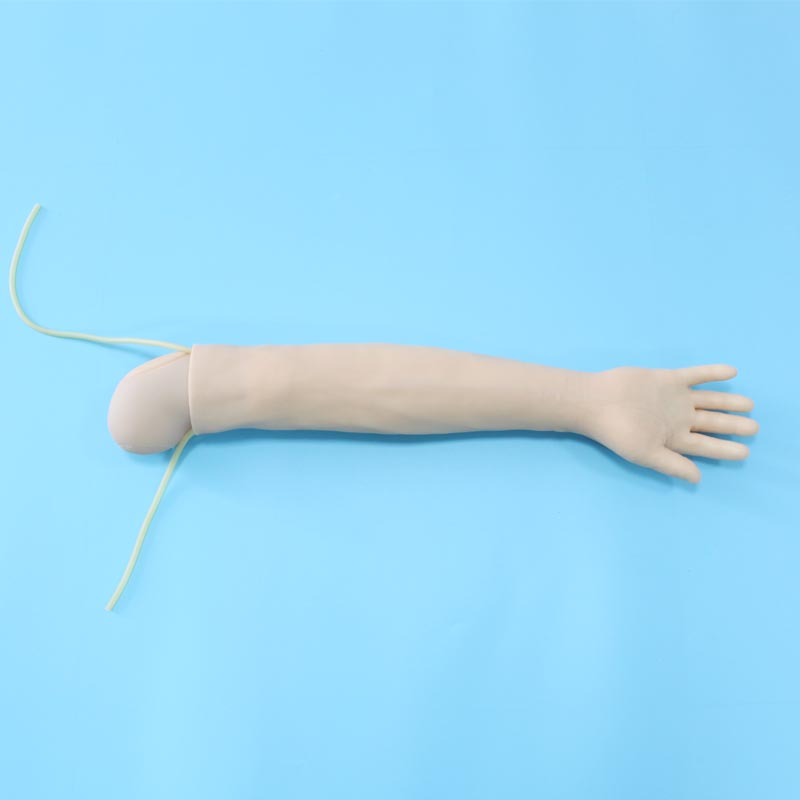In the medical field, venipunction in children is a task that tests the skills of medical staff and is extremely challenging. Because children's blood vessels are small and easy to move, the difficulty of venipentesis is greatly increased. Therefore, the emergence of the child venipuncture arm model undoubtedly provides a valuable training platform for medical personnel. So, is this model just a training ground, or is it closer to a rehearsal ground before actual combat?

First of all, from the design of the model, it is highly simulated, which can simulate the real touch of a child's arm. Inside the model are simulated blood vessels, which not only have the elasticity of real blood vessels, but also simulate the feeling of blood flow. This design enables medical staff to feel the details of the piercing process more truly during training, so as to continuously improve their piercing skills.
Secondly, the model also has a variety of functions, such as adjustable blood flow speed and replaceable puncture site. These features not only increase the diversity of training, but also help healthcare professionals better adapt to the needs of puncture in different situations. Through continuous training on the model, medical staff can gradually master the skills of performing venipentesis under different conditions and improve their resilience.
However, while the children's venipathic arm model is excellent at training, can it really simulate the actual combat environment? The answer may not be absolute. After all, there are differences between the real child patients and the model. For example, the emotional reaction, physical condition and vascular status of real children will affect the difficulty of venipentesis. Therefore, although the model can be used as a basis for training, the medical staff also need to accumulate experience in practice to truly become proficient.
To sum up, it is not only a training ground, but also a rehearsal ground close to actual combat. It can help medical staff improve puncture skills, enhance resilience, and be fully prepared for actual combat. But at the same time, healthcare professionals also need to recognize the differences between models and real patients, and continue to learn and grow in practice. Only in this way can we be both professional and confident when facing real child patients.
